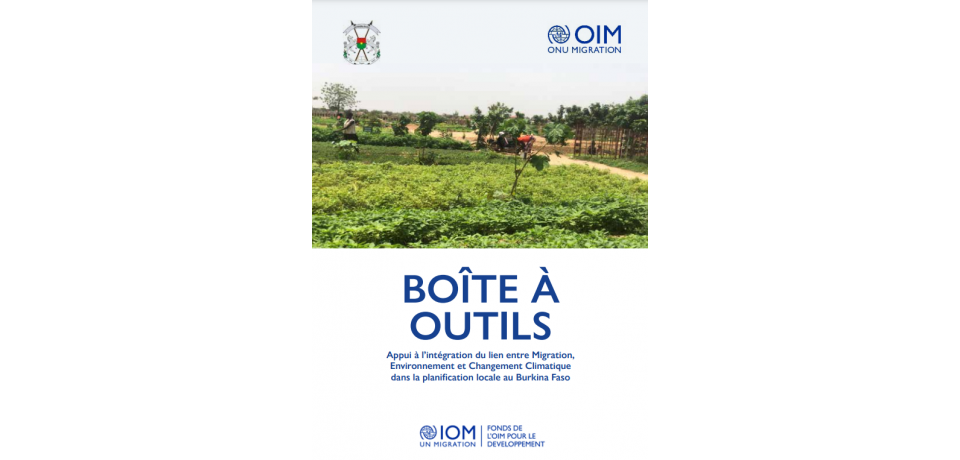Toolkit: Integrating the Link Between Migration, Environment and Climate Change in Local Planning in Burkina Faso
Related Sustainable Development Goals and Global Compact for Migration Objectives
While the link between migration, environment and climate change is a global phenomenon with worldwide ramifications, it is at the local level that the concrete consequences of environmental changes on populations are felt, and that forms of mobility influenced by environmental and climatic criteria are observed. At the center of a wide range of local actors, local governments are in an ideal position to initiate pilot projects to adapt to climate and environmental change, to implement measures to mitigate the environmental root causes of migration and to propose policies to optimize natural resources.
A new toolkit - Integrating the Link Between Migration, Environment and Climate Change in Local Planning in Burkina Faso - supports local government officials in Burkina Faso to integrate the migration, environment and climate change nexus into their local level governance and migration work. It comes in three parts:
- Toolbox
- Pratical Guide
- Training Manual
These materials contain:
- analytical frameworks
- practical tools
- concrete examples
- complementary resources
to support the implementation of a territorial diagnosis, a plan and a monitoring-evaluation system adapted to the specific challenges of the different territories.
They follow the elaboration of a preliminary diagnostic study of Bokin and Mané municipalities, respectively located in the North and Centre-North regions of Burkina Faso, allowing stakeholders not only to establish the profiles of these municipalities in terms of environmental migration, but also to evaluate key areas of focus and opportunities for local planning of the Migration, Environment and Climate Change nexus. Thus equipped, local authorities in Burkina Faso, and more broadly in the Sahel and the region, are in a position to take concrete action, with their partners, to strengthen the resilience of migrants and host communities in the face of current and future social, economic, environmental and climate challenges.
The toolkit builds on, combines and adapts existing global training tools (especially the IOM Migration and Climate Change training manual and the JMDI Toolbox on Migration and Local Development to support local governments integrate migration into their work). The tools have been published in French and specifically support municipalities in Burkina Faso, but the aim is to keep adapting and tailoring this toolkit for other municipalities in West and Central Africa and elsewhere, and to continue to add new and upcoming focuses such as climate and conflict, disaster risk reduction, etc.
This toolkit was produced in the framework of the project “Strengthening the Capacities of Local Authorities in Burkina Faso to Mainstream Migration, Environment and Climate Change into Local Planning”, funded by the IOM Development Fund (IDF).
